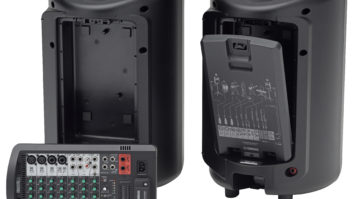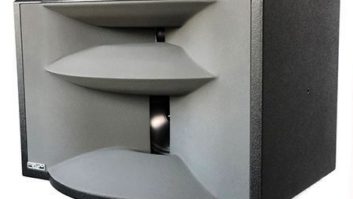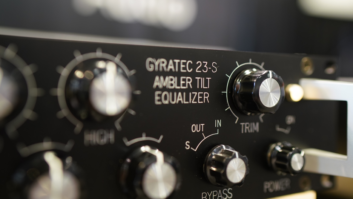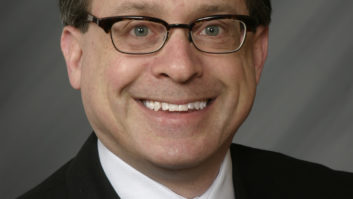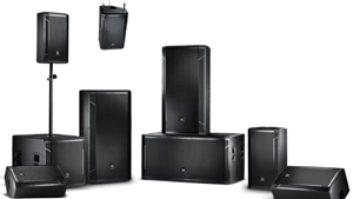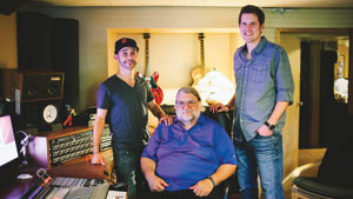For many, a “portable PA” (PPA) has long been the lightest, smallest and most basic live sound reinforcement tool that one can possibly cram into a hatchback along with instruments, musicians and so on. The product category, however, has broadened in recent years to include some all-in-one tools increasingly employed in smaller venues and multifunctional A/V environments such as houses-of-worship and educational, corporate and institutional facilities.
“Portable PA is unique right now because it’s evolving faster than any other category,” said Mike Brinker, Pro Audio Group manager at Sweetwater Sound. “Drums, guitars, recording, keyboards—none of those are changing as fast as portable PA. Bluetooth, wireless control, innovation in subwoofer technology and the latest mini-array designs are giving countless new customers the ability to run their own high-quality PA using a very portable package.”
Clearly, Portable PA has come a long way from powered “speakers on a stick” with a couple of relatively feature-less inputs. Considering this, what are the most sought-after PPA features among the category’s customers?
“Customers are ultimately looking for quality and ease of use in a portable PA,” Brinker said. “Over the last few years, the level of audio quality has improved considerably in [these] smaller systems. Even value-priced items offer good audio, so the more premium brands have to innovate to stand out and compete. A popular feature right now for all the components of a portable PA is wireless control. Internal DSP, apps, and Wi-Fi have transformed many [portable /small] mixers and powered speakers into all-in-one solutions for the user. No longer does one need all the traditional components of a PA system. With features like Bluetooth audio and built-in mixers, powered speakers can be just as effective on the patio for a cookout as they can for the gig. [Our] sales data shows that customers want wireless control, lots of power, and ease of setup and portability.”
Among the most notable manufacturers specializing in “all-in-one PPA” today are Bose, Fishman and Mackie Designs, with other manufacturers, like Harman’s JBL Professional, unveiling similarly capable products, such as EON ONE, in 2016.
“In 2004, we introduced the first L1 and created a new category called ‘Portable Line Arrays,’” said Bose’s Craig Jackson, product line manager, Portable Systems. This led to the development of Bose’s latest PPA, the F1 Series. “Some customers told us they needed a system that could play louder to keep up with live drums, said Jackson.” Others wanted more coverage options to be able to perform in a variety of rooms. And some asked for more flexibility with inputs and outputs. We noticed that large-format line arrays dominated the touring sound market and one of the benefits was the ability to tailor the sound coverage for each venue. This was something that could not be done with smaller format PAs.”
Fishman helped define the portable PA category with its “stick” PPA, 2008’s SA Series, which followed 2003’s LoudBox. “The real foundation of the Loudbox was simple,” said Larry Fishman. “To create an amplifier specifically for acoustic instruments and vocals with no coloration.”
Fishman’s original SA220 was designed for the acoustic singer/songwriter or acoustic duo: “Our experience in the acoustic amplification market pointed us in a direction that would satisfy the specific challenges and needs of that player. We created a product that was portable and easy to set up and use. But it also had to be powerful enough to fill the room evenly with an efficient linear speaker design for dispersion and wide coverage. Up until that point, the PA market was full of products that were cumbersome, required a lot of set-up time, and had wires going all over. There were a few other products that were portable but they lacked the control features, EQ and transparency that the SA220 had.”
Fishman’s latest SA Series product, the SA330x Performance Audio System, comprises all Fishman and Co. have learned about PPA since the early aughts. “We listened to dealers and customers, and developed a system that was a full-range PA system with an optional subwoofer and channel expander/mixer to satisfy players looking for a professional-quality system that could accommodate more input channels and also low end under 80 Hz.”
Mackie has recently launched its Reach and FreePlay products, each offering signal control for PPA users. “The Pro DX Series of small digital mixers, along with Reach and FreePlay Portable PA products, are built from one common technology platform that we developed,” said Mackie’s John Boudreau, senior vice president of Product Planning. “We felt like doing a small-format digital mixer would benefit many users; we know compact analog mixers really well. All the utility from a wireless mixer sitting behind a bar, regardless of the use…we thought if we could do a digital mixer and combine it with a Bluetooth chip, we could launch a number of products—portable PA and compact digital mixers—with better EQ, wireless connectivity and so on.”
As Brinker observed, recent PPA advances interestingly run parallel to the consumer recording revolution of the early ’90s: “As mixers and powered speakers continue to evolve with advances in DSP and external control, the perfect sounding PA will become more of a reality for everyone. Mixing on a tablet device may well be looked upon historically by live sound engineers [in much] the same way as recording engineers viewed the ADAT.”
